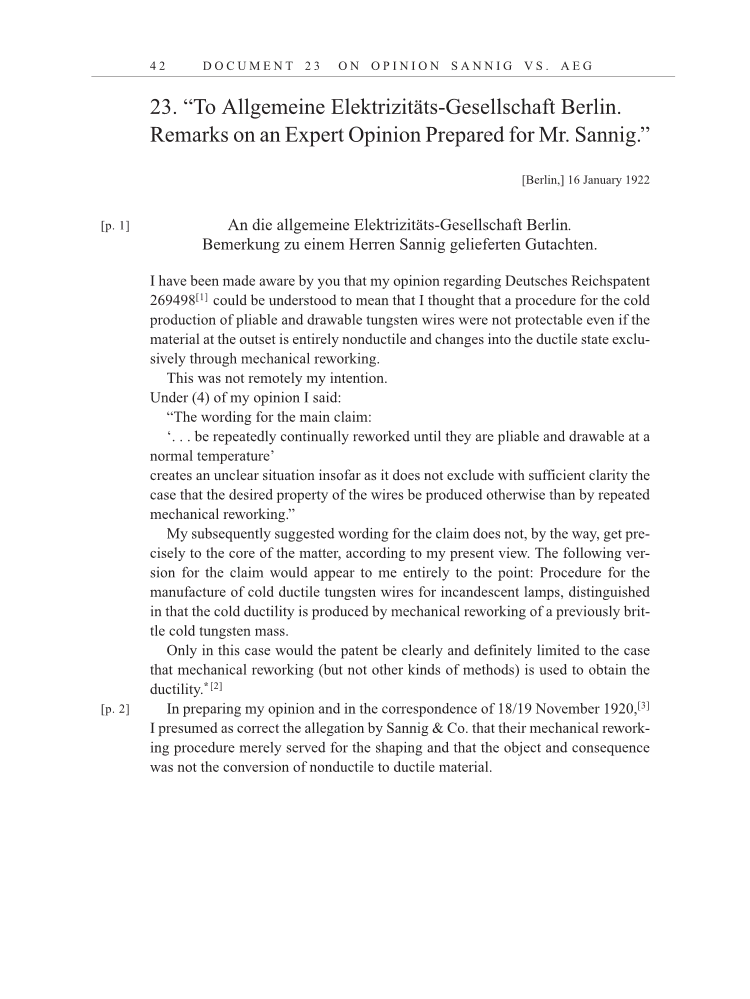4 2 D O C U M E N T 2 3 O N O P I N I O N S A N N I G V S . A E G 23. “To Allgemeine Elektrizitäts-Gesellschaft Berlin. Remarks on an Expert Opinion Prepared for Mr. Sannig.” [Berlin,] 16 January 1922 An die allgemeine Elektrizitäts-Gesellschaft Berlin. Bemerkung zu einem Herren Sannig gelieferten Gutachten. I have been made aware by you that my opinion regarding Deutsches Reichspatent 269498[1] could be understood to mean that I thought that a procedure for the cold production of pliable and drawable tungsten wires were not protectable even if the material at the outset is entirely nonductile and changes into the ductile state exclu- sively through mechanical reworking. This was not remotely my intention. Under (4) of my opinion I said: “The wording for the main claim: ‘. . . be repeatedly continually reworked until they are pliable and drawable at a normal temperature’ creates an unclear situation insofar as it does not exclude with sufficient clarity the case that the desired property of the wires be produced otherwise than by repeated mechanical reworking.” My subsequently suggested wording for the claim does not, by the way, get pre- cisely to the core of the matter, according to my present view. The following ver- sion for the claim would appear to me entirely to the point: Procedure for the manufacture of cold ductile tungsten wires for incandescent lamps, distinguished in that the cold ductility is produced by mechanical reworking of a previously brit- tle cold tungsten mass. Only in this case would the patent be clearly and definitely limited to the case that mechanical reworking (but not other kinds of methods) is used to obtain the ductility.* [2] In preparing my opinion and in the correspondence of 18/19 November 1920,[3] I presumed as correct the allegation by Sannig & Co. that their mechanical rework- ing procedure merely served for the shaping and that the object and consequence was not the conversion of nonductile to ductile material. [p. 1] [p. 2]
